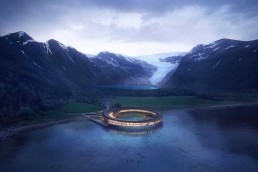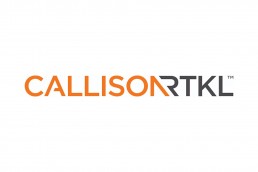Global architecture, planning and design practice CallisonRTKL has released its Hospitality Forecast 2022 – defining the design strategies that will shape the built environment in the year to come.
The firm predicts that the guest of 2022 is more likely to be domestic than international, to come seeking experiences and activities, not just views. They will continue to mix business with pleasure, playing into the ‘bleisure’ trend, and will commonly work at some point during their stay. Their most prioritised luxury will be personal wellness, with this increasingly linking to the wellness and the sustainability of the places they visit and the alignment of these to their social and environmental values; 83% of nomads think sustainable travel is vital, while 61% say the pandemic has made them want to travel more sustainably in the future.
Listed below are ten of the key changes to guest expectations, according to CallisonRTKL.
Food & Beverage (F&B) scope
While the recovery has not been evenly distributed, food and beverage (F&B) will be the catalyst that changes this. The scope of these facilities will be extended to service both the guest and the community.
The comeback of the (travelling) salesman
Hospitality offerings aimed specifically at the lower and mid-tier business traveller will see a return in 2022, with group and business travel expected to recover well. There will however, be a new awareness for the sustainability and frequency of corporate travel, with many organisations tightening policies around this to meet carbon positive targets.
Work From Anywhere (WFA)
With guests expecting to WFA and commercial real estate under stress, new demand is being created for hybrid hospitality/work spaces in central locations. Investing in membership programmes beyond those that focus on loyalty will mean spaces that can be repurposed into co-working facilities are easily monetised.
Hybrid hospitality
The move to remote services has culturally blurred the lines between work and play, between entertainment and exercise, and between many more previously opposing parts of life. Guests now expect hospitality offerings to accommodate this mix, make extended stays possible, and provide spaces for various activities and moods. Lifestyle hotels have the formula with enhanced F&B and entertainment options that amp up revenue and invite the community to participate in the energy. This will be a very powerful position in 2022.
Biometrics & data exchange
Gone are kiosks and touchscreen assistants. Guests now expect all hospitality services to be accessible via smartphone and to have the option of a completely contactless experience. This makes deploying digital far easier and cheaper, and data collecting far more consistent. However, care needs to be taken with the luxury traveller as high-touch experiences will continue to be the expectation.
Psychographics & behaviours over demographics
Rich data on guest behaviour gives us a much better view into their attitudes, perceptions, expectations and aspirations – the “why” behind their hospitality preferences and spending. This is what will be mined and analysed moving forward.
Profiling & personalisation
With the move to mobile, guest’s expect increased personalisation. Following in the footsteps of Airbnb, Netflix, YouTube and many more, available data will be analysed to shape a guest experience that is highly curated and able to refer guests to the services, amenities and offers most relevant to them.
Transaction-less travel
Guests expect ease and convenience. They will spend more when you make it easy and pay a premium for a seamless door-to-door experience that removes any points of friction. Membership programmes are moving to incorporate biometric technology into their room keys, identity cards, payment points and more.
IRL over URL
Digitally native guests will also want real-life experiences. Invisible technology will make for effortless experiences and operational efficiencies, with employees focused on building rapport, pre-empting guest demands and responding to their desired level of human interaction.
The local guest
Guests want to live as the locals do. There is no greater validation than becoming a local institution, a place where locals and visitors alike seek out. Hybrid membership programmes that make hospitality amenities accessible to locals for work, entertainment, health and socialising will increase the value of an asset and give it greater relevance among multiple audiences.
“To get ahead of changing guest expectations, design for attitude, not age, for co-working not business travel, for future uses not short-term pressures,” says CRTKL Principal Paul Condor. “Use tech to maximise experiences, not just minimise human interactions. Make the tech invisible and the data work harder. Create an offer as appealing to locals as to travellers and respect the ecosystem you are a part of.”
CREDITS
Headline Image: © Leonid Furmansky
Project: Virgin Hotels, New Orleans
Related Posts
4 January 2022
Sleeper Presents: Top new hotel openings of 2022
9 August 2021



